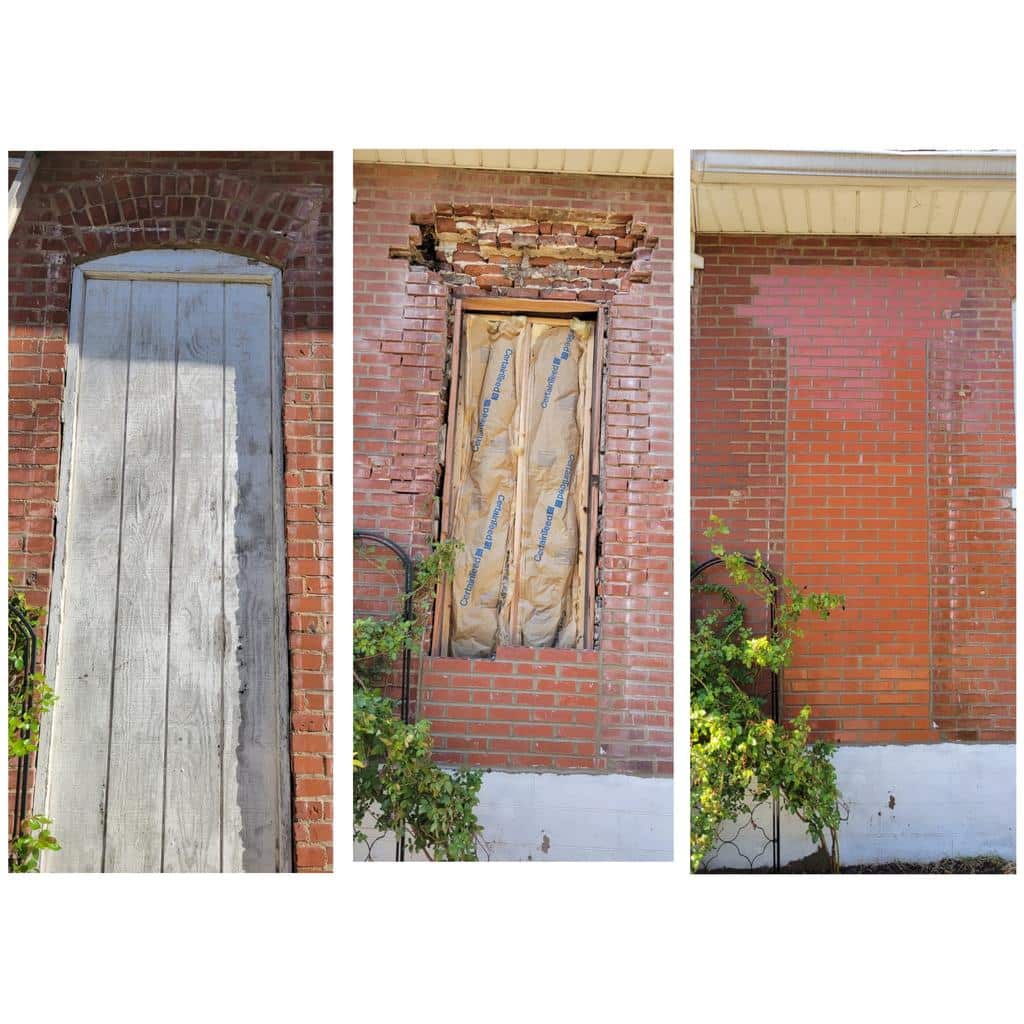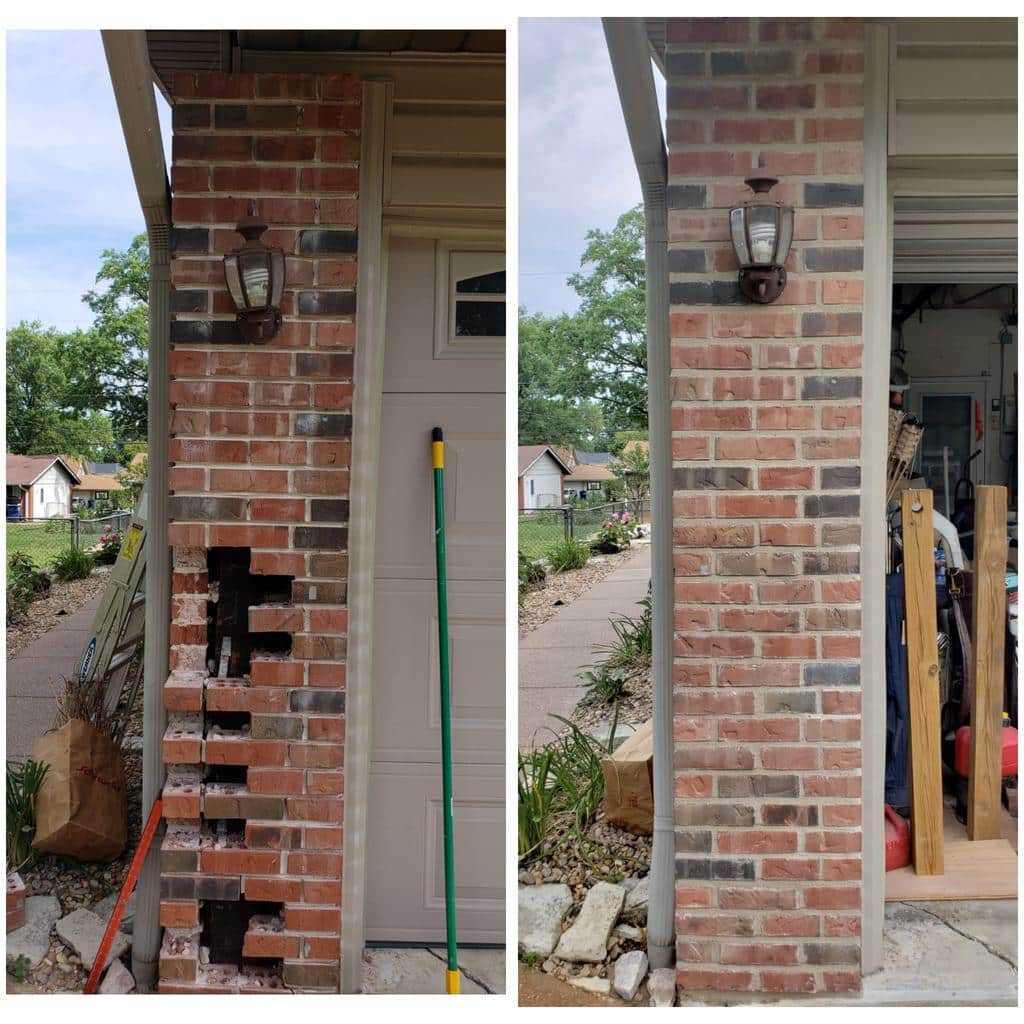The Basic Principles Of Raul's Tuckpointing Llc
Wiki Article
Not known Facts About Raul's Tuckpointing Llc
Table of Contents3 Easy Facts About Raul's Tuckpointing Llc ShownEverything about Raul's Tuckpointing LlcExamine This Report on Raul's Tuckpointing LlcFascination About Raul's Tuckpointing LlcExcitement About Raul's Tuckpointing LlcHow Raul's Tuckpointing Llc can Save You Time, Stress, and Money.
The white bows are applied initially, and the surrounding mortar loaded or tinted to match. Right here red mortar is made use of. The white fillets are laid out at normal spacing, which does not always correspond with the rough spacing of the joints. Professional tuckpointers utilize tools, which, relying on the nation as well as local profession terminology, are in some cases labelled "jointers", "tuck irons" or "tuckpointing irons"; mainly in London where the profession came from. [] Tuckpointing devices were originally made from functioned iron by blacksmiths in England during the 18th century. [] Modern tuckpointing tools are built from set tool steel, and normally have a wooden or synthetic handle that is connected to the tool surface area by a metal ferrule.This is comparable in principle to the pointed drifts utilized by concrete finishers to smooth out a surface. The density and also size of these devices are reliant upon the mason's choice and also the kind of brick or stonework they are tuckpointing. Wider tools are commonly used when tuckpointing stonework.
The process of tuckpointing needs that the excess lime putty is reduced away from the fine tuckpointed line. This is performed using a Frenchmen knife, a sort of knife with a little, sharp, bent suggestion that permits the lime putty to be reduced when assisted along the tuckpointed line with a tuckpointer's straight edge.
The Raul's Tuckpointing Llc Statements
Dual Frenchmen knives can be readjusted to match the size of the great tuckpointed lines.
Tuckpointing is labor-intensive and a great stonework professional can figure out the range of the work that needs to be done. 2. When to Tuckpoint? When you think your mortar is weakening and also might need to be fixed, there is a basic examination you can do prior to you call a stonework contractor.
Or you can call a masonry professional as well as he can assess the situation for you. Why Tuckpoint? When mortar is in a damaged problem, it triggers wetness to damage down the rock or brick masonry wall and potentially create moisture problems behind it.
How Raul's Tuckpointing Llc can Save You Time, Stress, and Money.

When is it Also Late to Tuckpoint? You recognize it's too late to tuckpoint when your stonework units (block or rock) obtain loose.
Well, that's it, tuckpointing essentially. With any luck, you now comprehend a great deal even more concerning tuckpointing, the what, the exactly how, the why, and also the when. If you still need more aid, call a seasoned masonry contractor in your location and he can range out the situation for you. Kansas City Stonework Service Provider, Dan Brotherton, is the president of Brotherton Masonry, Inc.
Get This Report about Raul's Tuckpointing Llc
If you begin to see fractures in your mortar, falling apart mortar, or evidence of water damages, you may ask yourself the question, "Do I need to have these mortar joints fixed, and also when?" Good question, let's see if we can not address that as well as a lot more in understandable terms. st. louis tuckpointing. Below I have made a list of 5 points you need to understand concerning tuckpointing.Tuckpointing is the procedure of eliminating the older mortar that sits between the bricks of a building. After the old mortar is gotten rid of, it is replaced with fresh mortar. In addition, a tidy line (called a "fillet") is included to the brand-new mortar to create an aesthetically appealing comparison with the remainder of the building.
So in this feeling, they are virtually identical. The only difference between tuckpointing and also repointing is the fillet. Repointing will replace the mortar, yet usually with a mortar color that is comparable to the structure. Tuckpointing adds the extra action of making sure that the fillet contrasts with the structure for a crisp as well as clean appearance.
Raul's Tuckpointing Llc Fundamentals Explained
The professionals can tackle this as quick as possible without cutting corners. Tuckpointing is a lot more essential than just as a visual tool. As stated earlier, the method that your building distributes its weight boils down to the quality of the mortar in between the bricks. Nevertheless, mortar offers a lot more objectives than simply this.When the mortar requires fixing, water can be drawn into cracks or vacant areas via capillary activity in the bricks, and also your indoor wall surfaces might start to rot or establish mold and mildew growth (http://ttlink.com/raultuckpnt). In many scenarios, you will certainly not know that these concerns have developed until severe damages has currently been done.
Tuckpointing is among one of the most common fixings that your brick building will go through during its lifetime. While the process can be done on your own, it is best to leave any type of repointing to the professionals. Professionals recognize just how to stop additional damages during the mortar replacement process.
The 6-Second Trick For Raul's Tuckpointing Llc

top article Softer than brick, mortar is the weakest part of the system as well as will wear away to the factor of repair after 25 to 30 years. Tuckpointing (or repointing) removes harmed or degraded mortar to a constant deepness.
Report this wiki page